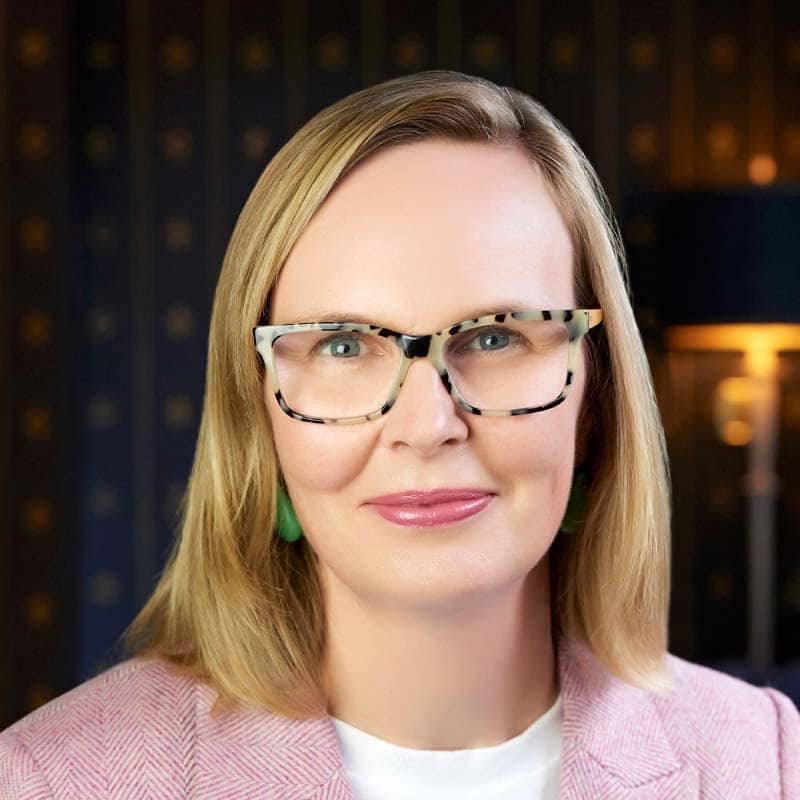Commissioner of Patents v Thaler [2022] FCAFC 62
Date:
Court:
Judges:
13 April 2022
Full Court of the Federal Court of Australia
Allsop CJ, Nicholas, Yates, Moshinsky and Burley JJ
Background
Dr Thaler’s Australian patent application no. 2019363177 entitled “Food container and devices and methods for attracting enhanced attention” (the Patent Application) entered national phase in Australia in 2020, naming an artificial intelligence system, known as DABUS, as the inventor. DABUS is an acronym for “device for the autonomous bootstrapping of unified sentience”. As part of the formalities check for national phase entry, the Deputy Commissioner of Patent notified Dr Thaler than the application must name a natural person as the inventor, failing which the application would lapse. Dr Thaler responded that this was not a requirement under the Patents Act 1990 (Cth) (Act). The Deputy Commissioner decided against Dr Thaler for three reasons: that the ordinary meaning of the term “inventor” is a person, that if an inventor included a machine then s15 of the Act (discussed further below) regarding entitlement to a patent would be unworkable, and that no other provisions of the Act or the Patent Regulations 1991 (Cth) provided any assistance on the matter.
As a consequence the Patent Application lapsed, following which Dr Thaler applied to the Federal Court for judicial review on the basis that the Deputy Commissioner had erred in law.
The parties agreed for the purposes of the proceedings that Dr Thaler was not the inventor of the Patent Application, but was the owner of the copyright in the DABUS code and of the computer on which it operates, and was responsible for its maintenance. The substantive issue addressed was whether the Deputy Commissioner erred in decided that DABUS was incapable of being an inventor in the context of the Act and Regulations.
Key Issues
At first instance Justice Beach, noting that the application had not been examined, and therefore that the Court was bound to assume the application would otherwise have met the requirements for patentability, found that to hold that artificial intelligence could not be an inventor would result in an otherwise patentable invention being precluded from grant of a patent, and would therefore be inconsistent with the objects of the Act. S2A of the Act provides that the “object of the Act is to provide a patent system in Australia that promotes economic wellbeing through technological innovation and the transfer and dissemination of technology”.
As to the meaning of the term “inventor”, his Honour held that its ordinary meaning is an agent noun, that is a person or thing that invents (similar to a dishwasher or lawnmower). Furthermore, he found nothing in the Act precludes an inventor from being a non-human artificial intelligence system, and drew a distinction between patent and copyright, the former requiring an inventive- step as a hypothetical or objective construct, whereas the the latter specifically requiring human authorship.
As to s15 of the Act, directed to who may be granted a patent (“entitlement”), he considered that subsection (b), which provides that a person may be granted a patent on the basis of assignment from another person, does not require an inventor at all, for example if the right arose out of a contractual right. He held that subsection (c) which provides that a person may be granted a patent if deriving title to the invention from the inventor or a person described in subsection (b), encompasses rights broader than assignment, for example a right by reason of Dr Thaler’s possession of DABUS itself.
On appeal by the Commissioner the Full Court agreed with the Commissioner that the origin of the current Act in the Statute of Monopolies 1624 meant the conception of an inventor was confined to human inventors, and the purpose of the monopolies to reward human ingenuity. In making this point the Commissioner referred to the High Court’s decision in D’Arcy v Myriad Genetics Inc [2015] HCA 35, which in a different context (patentability of isolated naturally occurring nucleic acid sequences), assumed that an invention must brought about by human ingenuity.
The Commissioner argued that the Act’s objects clause is not directed to promoting technology for its own sake. Transfer and dissemination of inventions does not achieve this alone; rather it is the balancing of these achievements over time that achieves this. On this point Thaler’s argument that a patent cannot be granted because a machine was the inventor, despite the invention meeting all the requirements of s18 would be inconsistent with the objects clause because the application will never be published, overlooks the role of the PCT in this case.
Specifically in relation to s15, the Full Court held that the determination of entitlement was predicated on the existence of an inventor, being a person who materially contributed to the inventive concept and having legal personality, from whom title derived.
Nothing in the Explanatory Memorandum introducing s15 indicated any intention to change the historical legislative assumption that the inventor is a person. The Full Court held this was consistent with the approach of the High Court in D’Arcy in which isolated naturally occurring genetic sequences were held not to be patentable as they had not been made by human action.
Furthermore, identification of the inventor is material to the validity of the patent, both in terms of assessment of the inventiveness and the extent of disclosure in the patent specification. Commissioner stated that the relevant question is whether DABUS is entitled to apply for a patent. If not, then Dr Thaler as the owner cannot stand in its shoes. The Commissioner submitted that the wording of the preamble in s15(1) together with subsection (a), while not a definition, requires the inventor to be a person as only a person has rights (such as the right to apply for a patent), and that subsections (b) and (c) are controlled by this, in that they concern title to a patent for an invention made by the person in (a) and the existence of a legal relationship between the two. The fact that Dr Thaler, as the owner of DABUS may have rights to its output does not make DABUS an inventor.
Outcome
Ultimately, the Full Court found that an interpretation of the term inventor as a human person is consistent with the historical assumption in patent laws that an invention requires human agency. The Court held the Deputy Commissioner was right to find that the Patent Application did not comply with the formal requirements for national phase entry.
Dr Thaler’s application for leave to appeal the decision to the High Court of Australia was dismissed in November 2022.
Implications
Interestingly, because for the purposes of the case it was accepted by the parties that Dr Thaler was not the inventor, the Courts did not have the opportunity to consider the possible inventive contribution that he made, and didn’t provide any guidance on the extent or quality of human contribution required. On a related point, the Commissioner, in arguing that allowing AI to be an inventor would be a radical widening of the concept of inventor, failed to address the human ingenuity involved in the development of AI and the benefit of rewarding this type of endeavour.
On the question of policy, the Full Court acknowledged that policy issues do need to be addressed with some urgency, although not informing the decision in this case. Questions to be asked include: if an inventor is redefined to include AI, who will be the patent owner: is it the owner of the AI system, the developer, the operator, or someone else? And given the standard of inventive step is judged by reference to a person skilled in the art, would this test need to be re-evaluated?
About Pearce IP
Pearce IP is a boutique firm offering intellectual property specialist lawyers, patent attorneys and trade mark attorneys to the pharmaceutical, biopharmaceutical and life sciences industries. Pearce IP is the 2021 ‘Intellectual Property Team of the Year’ (Lawyers Weekly Australian Law Awards) and was shortlisted for the same award in 2022. Pearce IP is ranked in IAM Patent 1000 and Managing IP (MIP) IP Stars, in Australasian Lawyer 5 Star Awards as a ‘5 Star’ firm, and the Legal 500 APAC Guide for Intellectual Property. Pearce IP leaders are well recognised as leading IP practitioners.
Our leaders have been recognised in virtually every notable IP listing for their legal, patent and trade mark excellence including: IAM Patent 1000, IAM Strategy 300, MIP IP Stars, Doyles Guide, WIPR Leaders, 5 Star IP Lawyers, Women in Law Awards – Partner of the Year, Best Lawyers and Australasian Lawyer 5 Star Awards, Women in Business Law Awards – Patent Lawyer of the Year (Asia Pacific), Most Influential Lawyers (Changemaker), among other awards.

Naomi Pearce
CEO, Executive Lawyer (AU, NZ), Patent & Trade Mark Attorney (AU, NZ)
Naomi is the founder of Pearce IP, and is one of Australia’s leading IP practitioners. Naomi is a market leading, strategic, commercially astute, patent lawyer, patent attorney and trade mark attorney, with over 25 years’ experience, and a background in molecular biology/biochemistry. Ranked in virtually every notable legal directory, highly regarded by peers and clients, with a background in molecular biology, Naomi is renown for her successful and elegant IP/legal strategies.
Among other awards, Naomi is ranked in Chambers, IAM Patent 1000, IAM Strategy 300, is a MIP “Patent Star”, and is recognised as a WIPR Leader for patents and trade marks. Naomi is the 2023 Lawyers Weekly “IP Partner of the Year”, the 2022 Lexology client choice award recipient for Life Sciences, the 2022 Asia Pacific Women in Business Law “Patent Lawyer of the Year” and the 2021 Lawyers Weekly Women in Law SME “Partner of the Year”. Naomi is the founder of Pearce IP, which commenced in 2017 and won 2021 “IP Team of the Year” at the Australian Law Awards.

Kate Legge
Special Counsel, Lawyer
Kate is an experienced IP and patent lawyer, providing IP leadership for pharmaceutical product development and commercialisation in global markets – from initial scoping through to post-launch.
She has developed and implemented global IP strategies over more than 15 years at multi-national pharmaceutical companies. She is an Australian qualified and registered legal practitioner, and has a Master’s degree in IP Law and a BSc in biochemistry.

